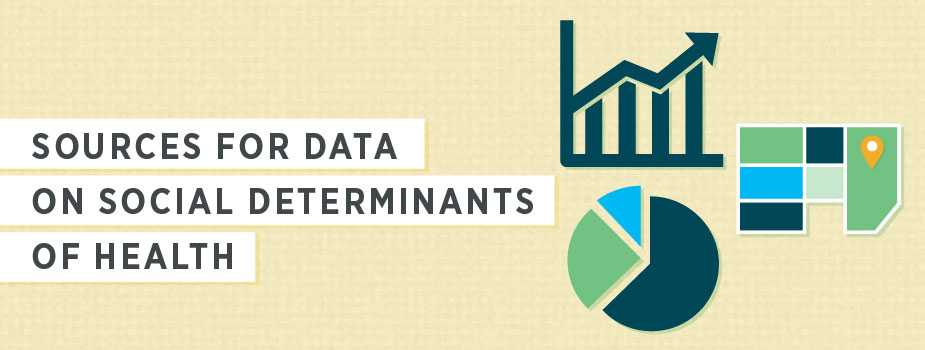Sources for Data on Social Determinants of Health

Data can be a catalyst for improving community health and well-being. Understanding data on social determinants of health, such as income, educational level, and employment, can help focus efforts to improve community health. The following tools are supported by CDC resources; some tools include references to data sources outside of CDC.
-
Chronic Disease Indicators
- Level of data: state, territory, select large metropolitan areas
- The Chronic Disease Indicators enable public health professionals and policy makers to retrieve state and selected metropolitan-level data for chronic diseases and risk factors.
-
Community Health Status Indicators (CHSI 2015)
- Level of data: county and census tract (for some indicators)
- The Community Health Status Indicators enable views of health profiles of every state and county and the District of Columbia. A set of primary and associated indicators that affect health outcomes and population health in various domains (e.g., health care access and quality, health behaviors, social factors, and physical environment) is accessible along with county demographics. CHSI 2015 lets users compare the value for each indicator with those of demographically similar “peer counties” in the United States and with Healthy People 2020 targets.
-
Health Indicators Warehouse
- Level of data: national, state, county, hospital referral region (for some indicators)
- The Health Indicators Warehouse provides access to national, state, and local health indicators. Users can query multiple dimensions of population health, health care, and health determinants, view data (in map, chart, or table form), and download indicator data.
-
Interactive Atlas of Heart Disease and Stroke
- Level of data: national, state, territory, county
- The Interactive Atlas of Heart Disease and Stroke enables online county-level mapping of heart disease and stroke by race/ethnicity, gender, and age group. Maps can show social and economic factors and health services for the United States, specific states, or territories.
-
National Center for HIV/AIDS, Viral Hepatitis, STD, and TB Prevention Atlas
- Level of data: national, state, select territories
- The Atlas provides interactive maps, graphs, tables, and figures showing geographic patterns and time trends of the reported occurrence of the following diseases: HIV, AIDS, viral hepatitis, tuberculosis, chlamydia, gonorrhea, and primary and secondary syphilis. The data are based on nationally notifiable infectious diseases in the United States and can be used to examine disparities.
-
National Environmental Public Health Tracking Network
- Level of data: national, state, county
- The Tracking Network is a system of integrated health, exposure, and hazard information and data from a variety of national, state, and city sources. Maps, tables, and charts with data about environmental indicators (e.g., particulate matter in the air) are available.
-
The Social Vulnerability Index
- Level of data: census tract
- The Social Vulnerability Index uses U.S. census variables at tract level to help local officials identify communities that may need support in preparing for hazards, or recovering from disaster. Social vulnerability refers to the resilience of communities when confronted by external stresses on human health, stresses such as natural or human-caused disasters, or disease outbreaks. Reducing social vulnerability can decrease both human suffering and economic loss.
-
Vulnerable Populations Footprint Tool
- Level of data: state, county, city, census tract
- The Vulnerable Populations Footprint Tool creates maps and reports that identify geographic areas with high poverty rates and low education levels—two key social determinant indicators of population health. Thresholds for target areas are adjustable, allowing the tool to be used in geographic areas where regional rates may be higher or lower than the national average. (Free registration required to log in to this tool.)
For questions or additional information, email healthpolicynews@cdc.gov.
- Page last reviewed: February 29, 2016
- Page last updated: February 29, 2016
- Content source:


 ShareCompartir
ShareCompartir